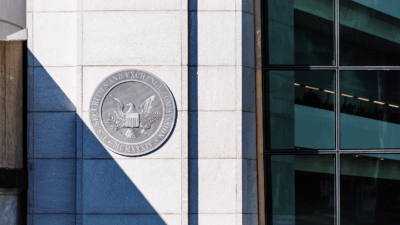Banks Thrill to Potential Softening of Post-Crisis Capital Requirements
US regulators are reportedly set to relax capital requirement rules on banks that were brought in following the 2008 financial crash.

Sign up for smart news, insights, and analysis on the biggest financial stories of the day.
2008 was a different time. Flo Rida’s “Low” was Billboard’s top song, Christopher Nolan’s The Dark Knight was the highest-grossing movie, and a deregulated Wall Street was in meltdown. While the world is still flush with Batman content, Flo Rida hasn’t had a hit in a decade and Wall Street has had a couple of good years, even if it’s mired in a haze of tariff uncertainty at the moment.
But some parts of the “before time” may be making a comeback: The Financial Times, citing multiple sources, reported last week that the US is poised to slash capital requirements imposed on banks in the wake of the 2008 crash. The banking industry, unsurprisingly, was already quite optimistic about a potential change.
Treasure for the Treasury Market
The focal point is the so-called supplementary leverage ratio, a rule that requires banks to hold a certain percentage of their deposits in liquid assets. Introduced by the US in 2014 as part of the Basel III international banking regulations, it is intended to make sure lenders have enough cushion to cover their risks and endure financial shocks like the 2008 crisis.
The baseline ratio is 3%, but for big banks deemed systemically important (code for “too big to fail”), it’s 5%. Treasury Secretary Scott Bessent essentially said changes are coming earlier this month, when he told Congress it was a “high priority” for the Federal Reserve, Federal Deposit Insurance Corp. and Office of the Comptroller of the Currency, the three regulators that oversee the rule. Federal Reserve Chair Jerome Powell also told lawmakers in February that reducing the SLR is something he expects to “get done.” The FT, meanwhile, reported that the ratio is now poised to be reduced in a matter of months, something Wall Street has argued would be a boon to the $29 trillion Treasury market:
- Bank lobbying groups have said the SLR prevents lenders from being more active intermediaries in the Treasury market. Powell signaled his agreement in February: “The amount of Treasurys has grown much faster than the intermediation capacity has grown, and one obvious thing to do is to lower, is to reduce the effective leverage ratio, the bindingness of it.”
- Bloomberg’s editorial board was skeptical of a change when Bessent floated it last month, calling it a “questionable idea” to “let banks load up on federal debt” at a time when “banks are overleveraged and Treasurys aren’t entirely safe.” In the latter case, it cited the shock waves that the Trump administration’s tariff policies have sent through bond markets.
The Bloomberg editorial board suggested the US could improve the standing of its sovereign debt by “making an effort to get government finances under control” and argued changing the SLR would merely weaken banks. To that point, Moody’s downgraded US sovereign debt on Friday, citing the federal debt and deficits — it was the last major credit rating agency to maintain a top rating for the US.
An Alternate Approach: Rather than cutting the SLR, regulators have considered excluding Treasurys and other assets deemed low risk from the calculation — something that was temporarily enacted during the pandemic. The FT noted that Autonomous Research estimated reviving the exemption would free up $2 trillion of balance sheet capacity for the big US banks.











